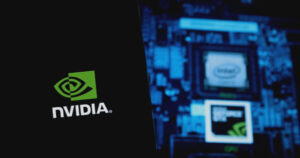Welcome to Extreme Investor Network, where we bring you the latest updates and insights into the world of crypto, cryptocurrency, blockchain, and more. Today, we are diving into the exciting advancements in autonomous vehicle development by NVIDIA’s PVA Engine.
In a recent article by Caroline Bishop, published on Oct 23, 2024, NVIDIA’s PVA Engine was highlighted for offering significant improvements in energy efficiency and performance for autonomous vehicle development. This innovative technology optimizes CV pipelines by offloading tasks from GPUs, revolutionizing the way AI models are integrated into autonomous vehicles.
As the automotive industry continues to push the boundaries of AI integration in autonomous vehicles, the demand for computing power has skyrocketed, leading to challenges in system stability and latency. The NVIDIA Technical Blog reveals that the Programmable Vision Accelerator (PVA) engine, available on NVIDIA DRIVE SoCs, is a game-changer in addressing these challenges by enhancing energy efficiency and overall system performance.
The PVA engine is a low-power hardware engine designed to offload tasks typically managed by GPUs, reducing system load and enabling efficient management of critical tasks within the CV pipeline. It supports a wide range of computer vision tasks, from preprocessing to postprocessing, while operating asynchronously with other components on the DRIVE platform.
NIO Inc., a prominent electric vehicle manufacturer, has leveraged the PVA engine to optimize its data pipeline, resulting in enhanced system efficiency. By offloading tasks such as image processing and deep learning operations to the PVA, NIO has successfully reduced GPU resource usage by 10% and freed up the VIC engine for other high-priority tasks. This optimization has demonstrated the potential of the PVA engine in real-world applications, showcasing its capabilities in enhancing system stability and efficiency.
Looking towards the future, NVIDIA suggests further enhancements in optimizing the pipeline by utilizing the PVA to replace the DLA with a simpler deep learning model and merging processing stages into a single PVA kernel to reduce overall DMA bandwidth. NIO continues to develop more efficient algorithms on the PVA using the PVA SDK, aiming to enhance product intelligence and competitiveness through the computational capabilities of the NVIDIA DRIVE platform.
The PVA engine’s flexibility and power make it a valuable tool for advancing autonomous vehicle technology, paving the way for a more efficient and intelligent future in the automotive industry. For more detailed information, be sure to visit the NVIDIA Technical Blog and stay tuned for more cutting-edge insights from Extreme Investor Network.

